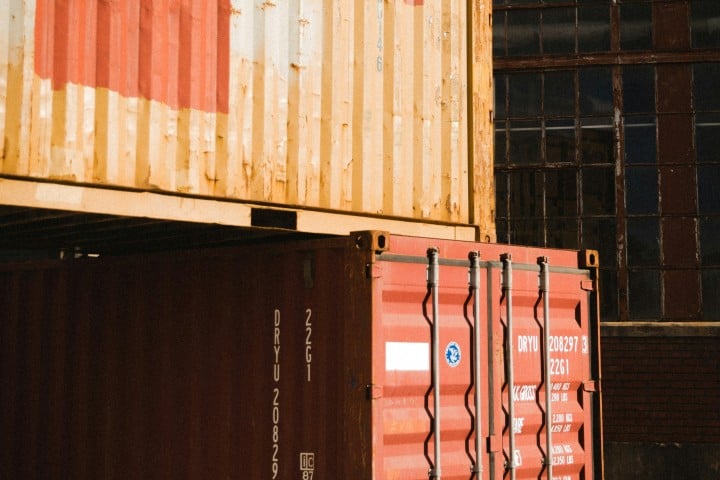1. The Benefits of Refrigerated Shipping Containers
Refrigerated shipping containers have revolutionized the transportation of perishable goods. These containers provide numerous benefits that help ensure the freshness, extend the shelf life, and maintain the safety and compliance of various products.

1.1 Keeping Perishable Goods Fresh
One of the primary benefits of using a refrigerated shipping container is its ability to keep perishable goods fresh during transportation. These containers are equipped with advanced cooling systems that maintain the ideal temperature and humidity levels required for specific commodities.
By maintaining the optimal environment, refrigerated shipping containers prevent the growth of bacteria, fungi, and other microorganisms that cause spoilage. This helps to preserve the quality and freshness of products, ensuring that they reach their destination in peak condition.
1.2 Extending Shelf Life and Reducing Food Waste
Another significant advantage of refrigerated shipping containers is their ability to extend the shelf life of perishable goods. By controlling the temperature and humidity, these containers slow down the natural deterioration process, allowing products to stay fresh for longer periods.
This extension in shelf life not only benefits businesses by reducing food waste and minimizing losses but also benefits consumers by providing them with products that have a longer lifespan. This helps to reduce overall food waste and contributes to a more sustainable supply chain.
1.3 Ensuring Food Safety and Compliance
Food safety is of utmost importance in the transportation of perishable goods. Refrigerated shipping containers play a vital role in ensuring that products meet the necessary safety and compliance standards.
These containers are equipped with features such as temperature monitoring systems and alarms that alert operators to any deviations from the set parameters. This helps in maintaining the integrity of the products and ensures that they meet the required temperature regulations and guidelines.
Additionally, refrigerated shipping containers are designed to meet industry standards and regulations for the transportation of food and pharmaceutical products. They provide insulation and protection from external factors that could compromise the safety and quality of the goods being transported.
2. How Refrigerated Shipping Containers Actually Work
Refrigerated shipping containers operate on the principles of refrigeration, utilizing various cooling systems to maintain the desired temperature inside the container. Understanding how these containers work is crucial for ensuring their optimal performance and the preservation of perishable goods.
2.1 Understanding the Principles of Refrigeration
At the heart of refrigerated shipping containers is the concept of refrigeration. Refrigeration is the process of removing heat from an enclosed space to lower its temperature. This is achieved through the use of a compressor, condenser, expansion valve, and evaporator.
The compressor compresses the refrigerant gas, raising its temperature and pressure. The hot refrigerant then flows to the condenser, where it releases heat and condenses into a liquid. The liquid refrigerant passes through the expansion valve, reducing its pressure and temperature. This low-pressure, low-temperature refrigerant then enters the evaporator, where it absorbs heat from the container’s interior, causing the temperature to drop.
2.2 Exploring Different Types of Cooling Systems
Refrigerated shipping containers utilize various cooling systems to maintain the desired temperature. Some common types include direct expansion (DX) systems, cryogenic systems, and air circulation systems.
Direct expansion systems use a refrigerant that circulates directly through the evaporator coils, absorbing heat and cooling the container. Cryogenic systems, on the other hand, utilize cryogenic gases or liquids, such as liquid nitrogen or carbon dioxide, to lower the temperature inside the container.
Air circulation systems utilize fans and vents to circulate cold air evenly throughout the container. This helps to maintain a consistent temperature and prevent temperature variations that could affect the quality of the goods being transported.
2.3 Maintenance and Troubleshooting Tips for Optimal Performance
To ensure the optimal performance of refrigerated shipping containers, regular maintenance and troubleshooting are essential. Here are some key tips to keep in mind:
- Regularly clean and inspect the container to remove any dirt, debris, or residues that could affect the cooling efficiency.
- Check and maintain proper insulation to prevent temperature leaks.
- Monitor and calibrate temperature settings to ensure accurate control.
- Routinely inspect and replace worn-out gaskets or seals to maintain a tight seal.
- Train and educate personnel on proper loading and handling practices to minimize temperature fluctuations during loading and unloading.
3. Types of Commodities Suitable for Refrigerated Shipping Containers
Refrigerated shipping containers can accommodate a wide range of commodities that require temperature-controlled transportation. Here are some common examples:
3.1 Fresh Produce and Vegetables
Fresh produce and vegetables are highly perishable and require specific temperature and humidity conditions to maintain their quality. Refrigerated shipping containers provide the ideal environment to transport these goods, extending their shelf life and ensuring they reach consumers in optimal condition.
3.2 Seafood and Meat Products
Seafood and meat products are sensitive to temperature fluctuations and can quickly spoil if not stored properly. Refrigerated shipping containers help preserve the freshness and quality of these products, ensuring they remain safe for consumption throughout the transportation process.
3.3 Pharmaceuticals and Temperature-Sensitive Products
Pharmaceuticals and other temperature-sensitive products require strict temperature control to maintain their efficacy. Refrigerated shipping containers provide the necessary environment to transport these goods without compromising their integrity or effectiveness.
4. Challenges and Innovations in Refrigerated Shipping
Refrigerated shipping continues to evolve as new challenges and innovations emerge. Addressing these challenges and embracing innovative solutions is crucial for ensuring the efficiency and sustainability of the cold chain.
4.1 Addressing Environmental Concerns and Energy Efficiency
As the demand for refrigerated shipping grows, so does the concern for its environmental impact. The refrigeration process requires significant energy consumption and can contribute to greenhouse gas emissions. To address these concerns, there have been efforts to develop more energy-efficient cooling systems, explore alternative refrigerants with lower environmental impacts, and implement sustainable practices throughout the cold chain.
4.2 Advancements in Cold Chain Monitoring and Tracking Technologies
Advancements in technology have transformed the cold chain industry. Cold chain monitoring and tracking technologies, such as real-time temperature sensors and GPS tracking systems, enable better visibility and control over the transportation process. These innovations help to identify and address any deviations from the set temperature parameters, ensuring the safety and quality of the products.
4.3 Multi-Temperature Zones and Dual-Function Containers
To optimize space utilization and cater to products with different temperature requirements, multi-temperature zone refrigerated shipping containers have been developed. These containers allow for the simultaneous transport of goods with varying temperature needs. Dual-function containers, capable of switching between refrigeration and standard shipping mode, further enhance flexibility and efficiency in the transportation of perishable goods.
FAQ
Question: What are the benefits of using refrigerated shipping containers?
Answer: Refrigerated shipping containers help keep perishable goods fresh, extend shelf life, and ensure food safety and compliance.
Question: How do refrigerated shipping containers work?
Answer: Refrigerated shipping containers operate on the principles of refrigeration, utilizing cooling systems to maintain the desired temperature inside the container.
Question: What types of commodities are suitable for refrigerated shipping containers?
Answer: Fresh produce, seafood, meat products, and pharmaceuticals are some common examples of commodities suitable for refrigerated shipping containers.
Question: What maintenance and troubleshooting tips should be followed for optimal performance of refrigerated shipping containers?
Answer: Regularly clean and inspect the container, maintain proper insulation, monitor and calibrate temperature settings, inspect and replace worn-out gaskets or seals, and train personnel on proper loading and handling practices.
Question: What challenges are faced in refrigerated shipping, and what innovations are being implemented?
Answer: Challenges include environmental concerns, advancements in cold chain monitoring technologies, and multi-temperature zones and dual-function containers. Innovations include energy-efficient cooling systems, alternative refrigerants, and improved cold chain monitoring and tracking technologies.
Question: How do refrigerated shipping containers help extend the shelf life of perishable goods?
Answer: Refrigerated shipping containers control the temperature and humidity, slowing down the natural deterioration process of perishable goods and allowing them to stay fresh for longer periods.
Question: What are some of the types of cooling systems used in refrigerated shipping containers?
Answer: Common types of cooling systems include direct expansion (DX) systems, cryogenic systems, and air circulation systems.
Question: How do refrigerated shipping containers ensure food safety and compliance?
Answer: Refrigerated shipping containers are equipped with temperature monitoring systems and alarms to alert operators of any deviations. They also meet industry standards and regulations for the transportation of food and pharmaceutical products, providing insulation and protection.
We hope you found this blog post on A Cool Solution: The Guide To Refrigerated Shipping Containers, useful. Be sure to check out our post on Modified Shipping Containers: Unpacking a Global Trend for more great tips!
Have Experience in the Moving Industry? Want an Additional Income Stream? Work With All Around Moving!
The Work With Us program at All Around Moving allows you to run your own Relocation Contractor company from anywhere in the United States. Click here to learn more.





